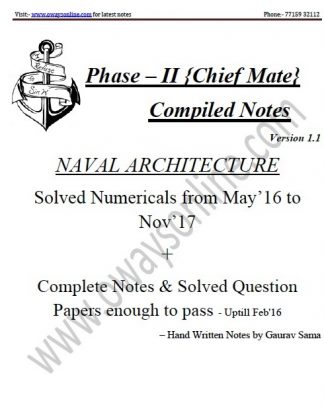Q) What are the differences between GRT, NRT and GT, NT?
Ans:- GRT stands for Gross Register Tonnage and NRT means NET Register Tonnage. Both these terms are now obsolete and have been replaced respectively with GT and NT under International Convention on Tonnage Measurements of Ships.
However, students may note the definitions of GRT and NRT for their reference:
- Gross Register Tonnage (GRT) meant a measure of the total internal capacity of the ship. It consisted of: under-deck volume excluding double-bottoms, volume of tween deck spaces, volume of superstructures, volume of deck-houses etc. Spaces like navigational areas, galleys, stairways, light and air spaces were exempted. The total volume thus calculated in cubic feet was divided by 100 (1 gross ton = 100 cubic feet). This was the Gross Tonnage entered in the ship’s Register.
- Net Register Tonnage (NRT) meant a measure of the available space for the carriage of cargo and passengers. This was obtained from GRT after making some deductions. These deductions from GRT included: Master and crew accommodation, safety and storage spaces, water ballast tanks, allowance for propelling machinery. Again the resulting volume in cubic feet was divided by 100 (1 net ton = 100 cubic feet). This was the Net Tonnage entered in the Register.
- Gross tonnage is a function of volume of enclosed spaces of a ship. It is indicative of ship’s size.
- Net tonnage refers to volume of cargo carrying spaces. It is indicative of vessel’s earning potential. The NT cannot be less than 30% of the GT of a ship. Net tonnage is used for ship’s dues. Both GT and NT are determined by measuring ship’s volume and then applying a mathematical formula. Both GT and NT are dimensionless numbers and are shown in ship’s International Tonnage Certificate. They do not have any physical units and should not be confused with unit of mass, namely ton.
Q) Differentiate between Enclosed spaces and Excluded Spaces as per International Tonnage Convention 1969 with appropriate sketches.
Enclosed spaces are all those spaces which are bounded by the ship’s hull, by fixed or portable partitions or bulkheads, by decks or coverings other than permanent or movable awnings. No break in a deck, nor any opening in the ship’s hull, in a deck or in a covering of a space, or in the partitions or bulkheads of a space, nor the absence of a partition or bulkhead, shall preclude a space from being included in the enclosed space.
Excluded Spaces – Notwithstanding the provisions of the above paragraph, the spaces referred in sub-paragraphs (a) to (e) shall be called excluded spaces and shall not be included in the volume of enclosed spaces, except that any such space that fulfills atleast one of the following three conditions shall be treated as an enclosed space.
- The space is fitted with shelves or other means for securing cargo and/or stores.
- The openings are fitted with any means of closure.
- The construction provides any possibility of such openings being closed.
A space shall be considered an ‘Excluded space’ in the following cases:
- A space within an erection opposite to an end opening extending from deck to deck.
- A space under an overhead deck covering, open to the sea and weather, with no other connection to the ship side other than stanchions.
- A space in a side-to-side erection directly in way of opposite side openings.
- A space in erection immediately below an uncovered opening in the deck overhead, which is exposed to weather.
- A recess in the boundary bulkhead of an erection which is exposed to the weather and the opening of which extends from deck to deck without means of closing.
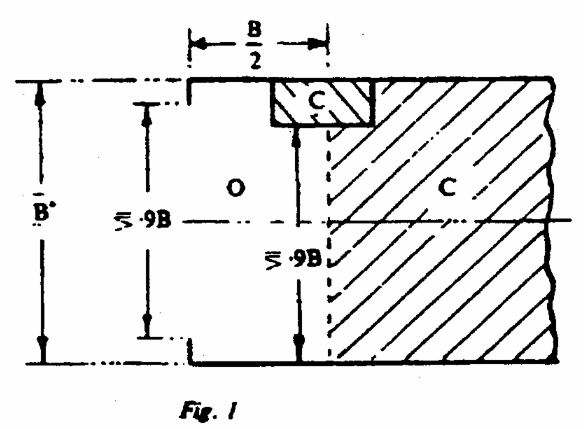
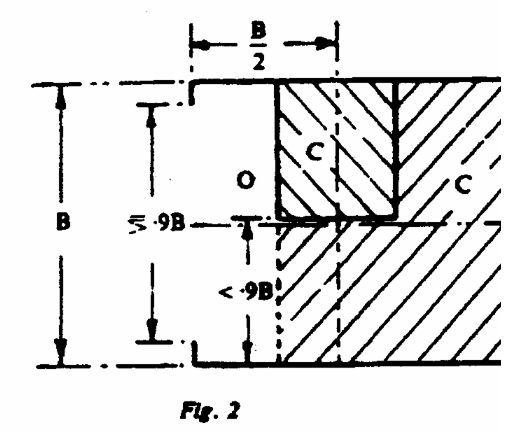
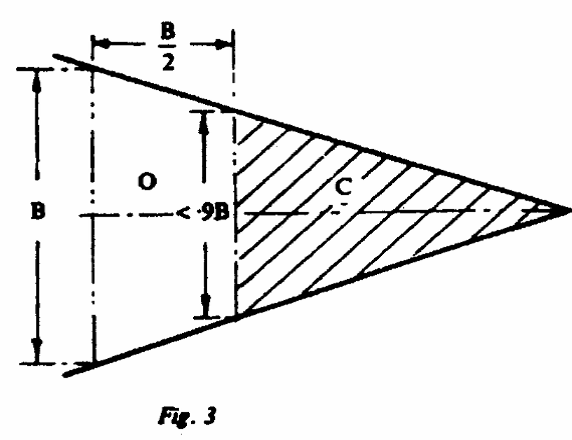
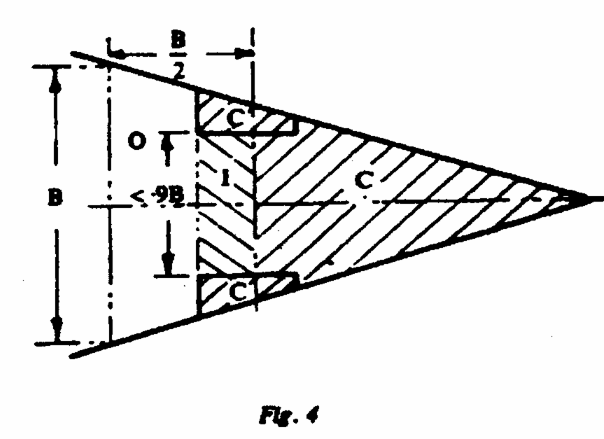
O = Excluded Space, C = Enclosed Space, I = space to be considered as an enclosed space. B = breadth of the deck in way of the opening.

